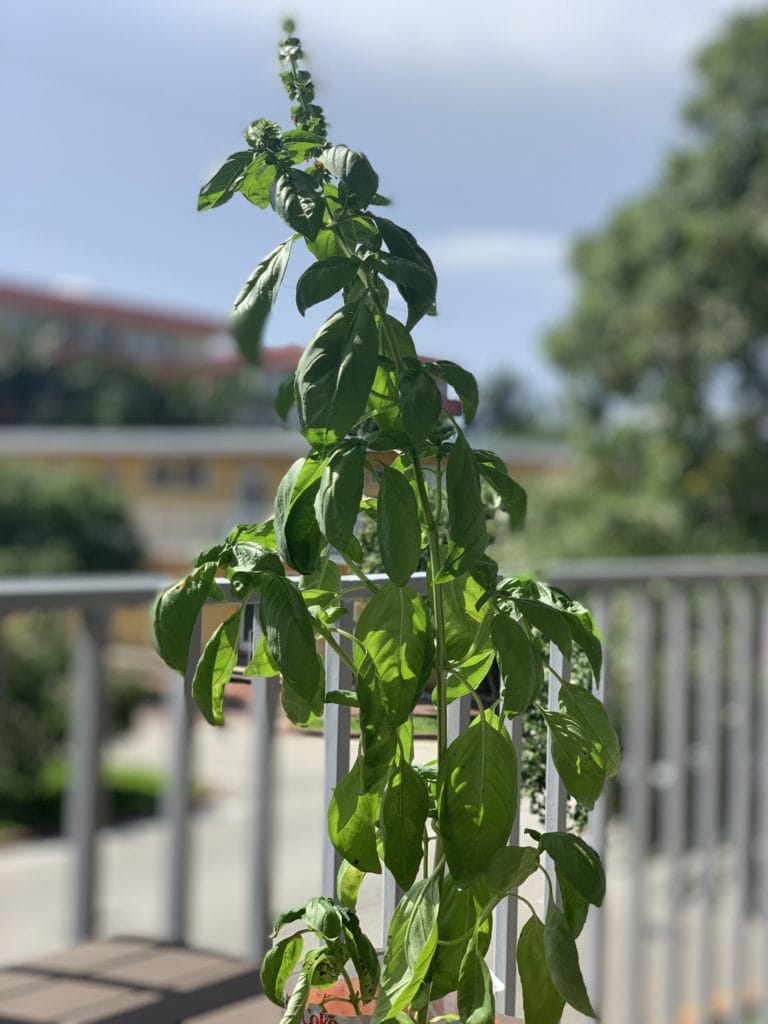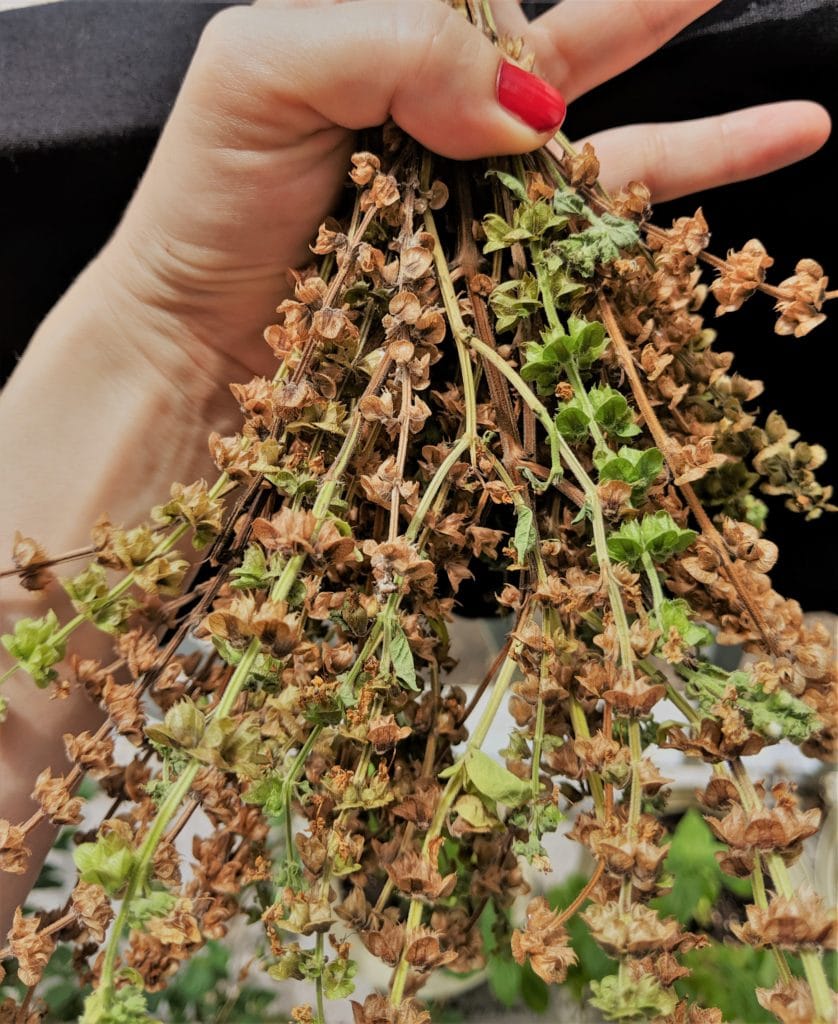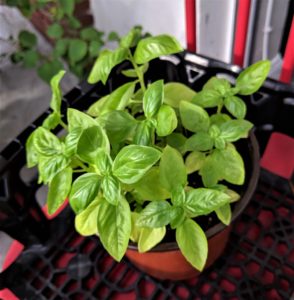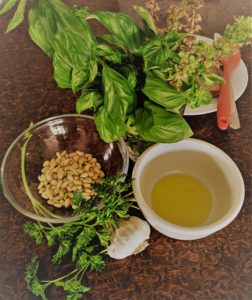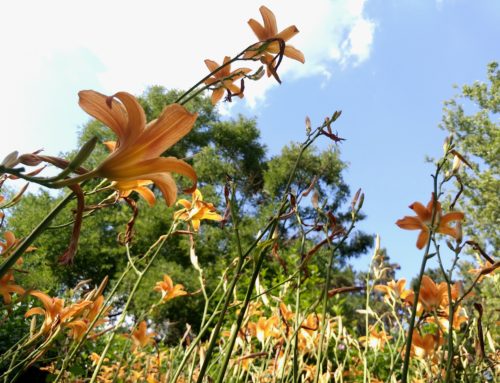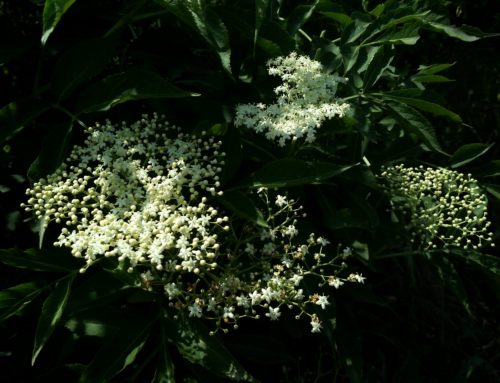Miami style: Sweet basil growing
Grow that sweet basil. Share it, eat it. Recycle. Miami style
Inspired by ever-sunny, ever-humid and ever-green South Florida (and myself being ever-hungry) I decided to give it a go with some sweet basil growing – on a balcony. One might think that there’s simply enough space for a couple of plants, but unexpectedly, thanks to hardiness zone 10b (minimum annual temperatures 35-40 F/ 1.7-4.4 C) in two months I managed to make a jungle on my 60 square feet balcony. So, my green surfing USA adventure (greenfin USA) starts here – in Miami.
Grow your basil toddlers
Just for fun, from the plant I bought (which, of course, readily flowered) I collected seeds, dried them in a wreath (it might have even repelled some mosquitoes) and tossed them on a loose sandy soil. After a couple of days, first seedlings emerged, after a month I had the greenest balcony floor ever! Replanted them, gave enough space and – voila! They were ready for a final replant and good to go to their new owners. Couse, all of a sudden I realized there’s just not enough space for all of them and after all, I should spread some green love and make somebody else happy. Right?
Make a home for basil plants: Recycle plastic bottles
Since I haven’t had enough pots, I used plastic bottles (incredible amounts of plastic is being tossed away, with no option for primary recycling in Miami), so I decided to contribute to local community cleanness. These were perfect transport-wise gifts, and my plants were set comfortably in their new homes. Needless to say, I made a couple of drainage holes at the bottom of each bottle, along with a pebble or two, so they wouldn’t drown and wilt due to excessive watering (read: daily summer showers).
Additional info – soil
Probably due to constant raining and type of plants being grown here in Miami, in specialized stores usually you can come up to very loose soil, with lots of perlite and sand. However, this soil vanishes quickly, plants just use it very fast, so I decided to add some manure and compost in order for them to remain full. Sand and stones inside are always desirable assets, since basil naturally occurs in dry areas, in a rocky substrate that drains quickly. Only then, in the sun, when you pick the leaves and flowers if it is dry and hot all the oils and phenols we are growing them for – will be at their peak. However, this is up to you and your experience with your climate zone.
Sweet Basil pests and diseases
Being grown in the tropic area, a paradise for fungi and bacteria, if you grow basil, pay attention to several symptoms. Foremost downy mildew (fungi), so keep your plants exposed to natural draft in order to prevent it. Think of it as preventing flu in common spaces, when you open the windows from time to time. Also, mealybugs (wooly aphids) – white small sticky insects can pose a threat. Pests like mealybugs naturally occur in warm climates (in greenhouses in cooler areas), feed on sap and transmit several plant diseases. These little guys have many generations per year, so you have to check up on and clean your basil regularly. Like weekly. As for bacteria, if you spot any symptoms, you should get rid of those parts of the plant – pronto! And of course, don’t put any of infected plants in your compost. Keep it clean and healthy.
Who is Mr. Sweet Basil?
Ocimum basilicum L. aka Sweet Basil is a Lamiaceae (Mint) family plant. Traditionally, many nations grow this erect annual/perennial herb (and its cousins), primarily for its leaves called basil. The fragrant odor and refreshing taste brought this plant worldwide fame.

Even if you live in the apartment, with a bit of effort and sun and love, you can have your basil too
Nowadays it’s a part of everyday cooking and seasoning, being famous as a basic ingredient of the pesto sauce. It is used instead of oregano on pizza, as part of fish dishes, with tomato sauce, etc. You can have it dried, as a tea, or as a cosmetic product.
Sweet Basil can grow to 2-3 feet (90 cm) tall, and it smells nice even when you water it, hence it is a usual part of many gardens all over the world. There are several species of Basil, and you won’t go wrong with growing any of them. Just remember, this plant requires sun, good drainage, watering and a lot of love.
To pesto, or not to pesto?
As I mentioned earlier, I am always hungry. So, out of my yield, I made some homemade pesto sauce. Just add pine nuts, olive oil, parmesan cheese, just a little bit of garlic, and there you have it. Buon appetite!

